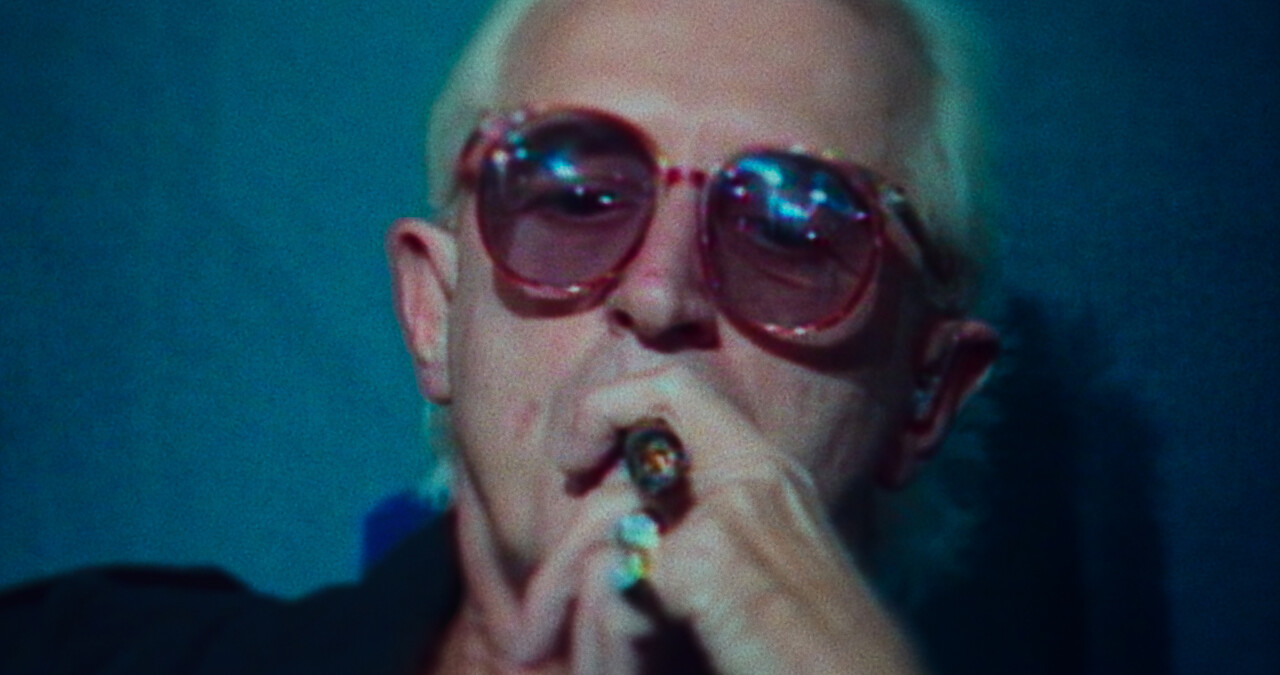
By Diedre Johnson
In the new two-part documentary Jimmy Savile: A British Horror Story, debuting April 6, Britain’s most celebrated — and reviled — DJ and TV host is reexamined more than a decade after his death. Savile, who was known for hosting the long-running music show Top of the Pops and BBC’s Jim’ll Fix It, died in 2011 at age 84 before his horrific history of sexual abuse came to light. In the aftermath of his passing, hordes of people came forward claiming that Savile had molested, raped or otherwise abused them. Allegations against Savile indicate that he sexually violated upwards of 400 people over a 54-year span (1955 to 2009), with his victims ranging in age from 5 to 75. Investigators were able to corroborate dozens of stories from Savile’s past, and the nation was shocked, left to grapple with the consequences of a man who was never held accountable in his lifetime for generations of trauma. Now the new documentary, executive produced by David Glover and Mark Raphael, explores the former DJ’s rise to fame, his fall from grace and the powers surrounding him.
Savile began building his career in the mid-1950s, freelancing as a radio host at events around the UK. His humorous style and affability helped him skyrocket in popularity. In 1958, he became a full-time DJ at Radio Luxembourg, and in 1968, Savile joined BBC Radio 1, where he worked for some 20 years. Eventually, Savile was able to parlay his broadcast skills into lucrative TV-hosting gigs, and he became regarded as a top-tier celebrity interviewer, admired for his unique combination of frivolity and physical comedy. “He understood that there was a connection you could have with people through a TV screen,” says British TV critic Mark Lawson. “He did have skill as a broadcaster but I’d sort of forgotten about that because of the later depravity.” Throughout his career, Savile regularly worked with charities for Broadmoor psychiatric hospital, the Duncroft School and the Stoke Mandeville Hospital. Not only did he raise money, but he also put in hours of time actually helping attendants and orderlies. Broadmoor staff even gave him his own room when he visited.
His charitable work caught the attention of Prime Minister Margaret Thatcher, who praised him publicly and privately and lobbied for him to receive a knighthood. He received the OBE in 1971 and his knighthood from the Queen of England and from Pope John Paul II in 1990, after which he became Sir James Savile. He was also connected to politicians, police and members of Parliament for decades before he was publicly accused of any abuse.
Savile’s secret almost came to light in 2007 when Surrey police were contacted by a woman who said she witnessed “an incident” at the Duncroft School 30 years prior. Three other women corroborated her story, yet when Savile was called in for a police interview in 2009, he denied all and threatened a lawsuit. The three women were reportedly reluctant to go to trial, and four weeks later, prosecutors dropped the case. For nearly two years, nothing came of the accusations levied against Savile, with most of the public presuming his innocence.

Danny Lawson/PA Images, via Getty Images
In 2011, that all changed when another victim, Karin Ward, wrote about Savile’s abuse on Friends Reunited, an early-aughts social site. Ward, who appeared on one of Savile’s ’70s-era TV specials, describes the abuse in the documentary: “He wanted me to fondle him and he promised me that if I gave him oral sex that he would arrange for me and my friends to be... on his television show.” Under pressure from a public figure’s advances, Ward wrote that Savile took her out in his car and groped her, promising her “good things.” However, just before her story was to be televised, top executives at the BBC asked producers not to run it and the story was shelved, according to former BBC journalist Meirion Jones. Even if her story was not shown by the BBC, Ward’s speaking out to Jones led other survivors to contact him as well (the story later aired on ITV). “What we were being told by Karin and the others was that they’d been taken on trips to the BBC and that there had been groping... with Jimmy Savile,” he said.
Another survivor, Sam Brown, also came forward and said Savile molested her many times when she was an adolescent attending church services at the Mandeville chapel. When the allegations began to come out after Savile’s death, with the support of her husband, Brown knew she needed to speak up. “And that’s what I did, and I can kind of look at my young me with less pain now. I’ve actually become closer to me, the child me, and I think that’s nice,” Brown says in the documentary.
As the truth unraveled after his death, Savile was repudiated at large. His pop culture image was recast, and headstones and landmarks that sought to honor his life were removed. A decade later, Savile's name can bring about anger and frustration. Many still question how he could have gotten away with so much for so long. In the documentary, journalist Andrew Neil says the BBC made a mistake in not publishing Ward’s story on Savile: “We should have got this guy.” The documentary now seeks to reexamine what happened in the aftermath of the many people who came forward about Savile’s abuse.
If you or someone you love is struggling with sexual violence, there is help.
